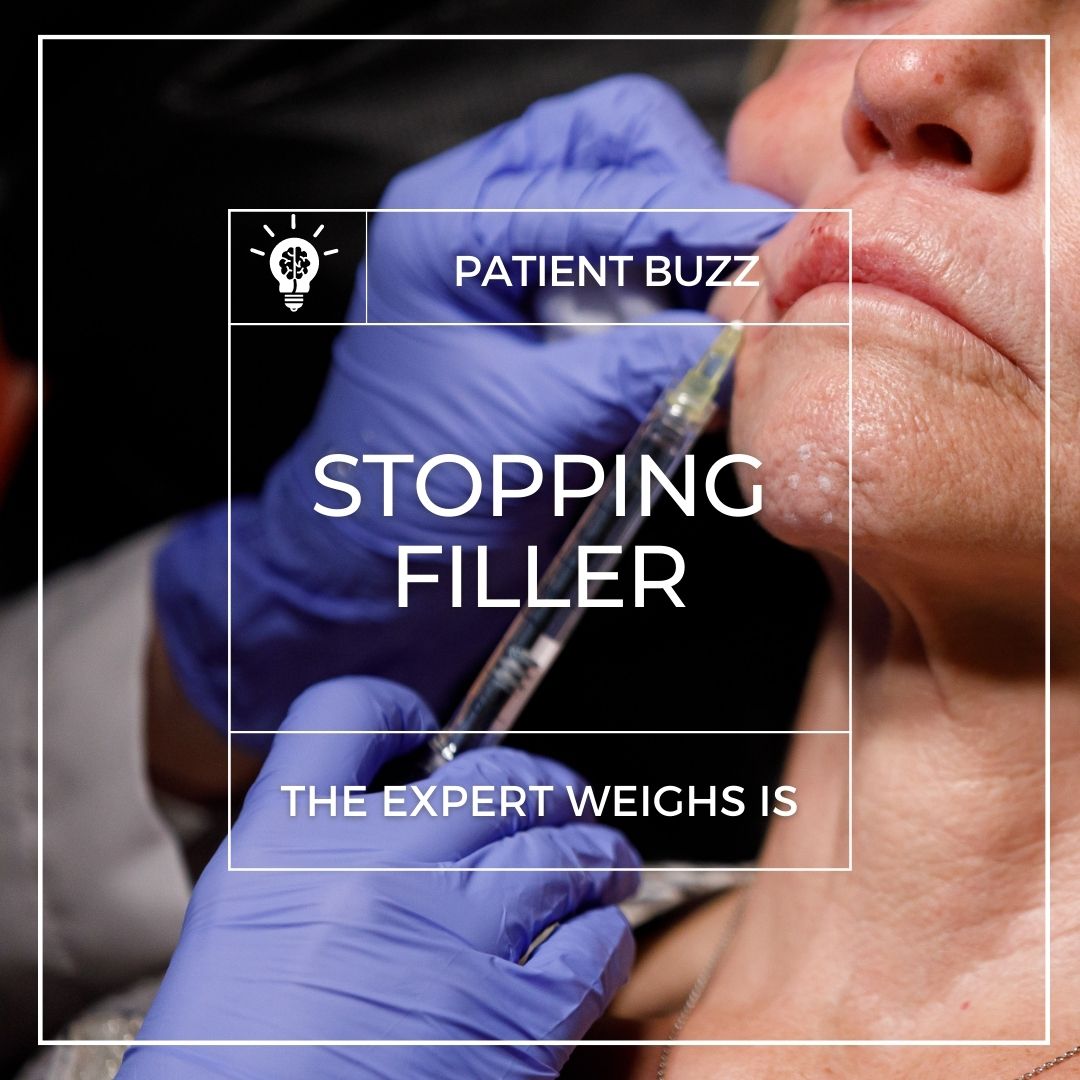Allure recently posted an article on what happens if a person stops getting filler. What should dermatologists recommend to their patients who want to stop using filler? How can dermatologists help prevent “filler fatigue”?
For expert advice, I reached out to Robyn Siperstein, MD, FAAD, a dermatologist in Boca Raton and Boynton Beach, Fla.
Have you noticed more of your patients looking to stop using filler or to dissolve existing filler? If so, what reasons do your patients give?
Yes, now that fillers have been around for 20 years, we are seeing more delayed onset issues. Migrated lip filler and undereye swelling are the top two reasons I dissolve filler in my practice. Both of these areas are small spaces that are very prone to delayed onset swelling, which can look unnatural, therefore it makes sense these would be the most requested. The third most requested location is the cheeks. Often injectors design treatment plans with their patient’s face in repose and then when they smile it appears as too much filler or unnatural. I make sure to have the patient smile and I mark out the maximal projection during animation to ensure I do not add to this area in the anterior cheek.
What are the continued effects of filler on the soft tissues of the face?
While the clinical effects may go away after a year, we have evidence through MRI studies by Mobin Master, MD, and surgical studies by Kingsley V. Chow that the actual filler particles may be present for a decade or more. While most of the time this has no effect, it is possible that as these fillers start to metabolize into smaller particles, they may draw more water due to the larger surface area (more numerous smaller particles vs. large conglomerate) and may block the nearby lymphatics causing unnatural swelling.
What do you recommend to an average patient who wants to stop using filler?
If a patient wants to stop using hyaluronic acid filler, there are collagen stimulators like Sculptra that they may be more comfortable with. In addition, there are many devices to tighten their skin and stimulate collagen, such as CO2 and Erbium YAG laser resurfacing, non-ablative lasers (1927nm Thulium), microneedling with radiofrequency, and IPL.
What do you recommend to patients who are overfilled in the face or the lips?
I find deep subdermal microneedling with radiofrequency at long durations (200ms) to be great at decreasing filler volume naturally. Another more common treatment option is hyaluronidase. However, most of the time when I inject this product I use microdoses diluted with saline and inject broadly with a cannula to subtly decrease any unnatural panfacial volume slowly and repeat if necessary. If you inject straight hyaluronidase, sometimes you can see a discrete depression with an obvious demarcation of where the hyaluronidase was injected. Also I explain to patients it is like deflating a grape to a raisin or deflating a balloon in that they may get temporary laxity until the skin readjusts to the new volume. In addition, it is important to warn people they may not remember what they looked like previously (there was a reason they sought out filler in the first place) and they may have aged in the area since the time of the injections so they need to be prepared to look worse. These reasons are why I recommend dissolving slowly with low doses unless there is an acute issue such as a granuloma or severe swelling in which dissolving it all immediately is necessary.
What’s your advice for clinicians in preventing “filler fatigue” with their aesthetic patients?
Never inject too much at once. The best outcomes I have are when I inject small amounts slowly over time. Remember, filler is not a substitute for a face lift. It can revolumize those areas that have lost volume, but using large amounts to try to get 1mm of lift in someone who has good volume to begin with is not a wise choice. Also make sure to diversify your patients’ treatments with devices in addition to injectables as this is important to prevent filler fatigue.
Did you enjoy this post? You can find more here.

